#Catharina van Hemessen
Photo

Catharina van Hemessen (Flemish, 1528-c. 1587): Self-portrait (via Wikimedia Commons)
To our twenty-first-century eyes, this small self-portrait could be dismissed as a charming, slightly clumsy curio, a dusty offering painted at a time when few women were professional artists. However, despite appearances, it is a radical and ground-breaking work of art: it’s widely considered to be the earliest surviving self-portrait of an artist of any gender seated at an easel -- and Catharina is the first female Flemish painter whose work we know of.
-- Jennifer Higgie, The Mirror and the Palette: Rebellion, Revolution and Resilience: 500 Years of Women’s Self-Portraits
#Catharina van Hemessen#early women painters#early women artists#women artists#women painters#art#painting#jennifer higgie#the mirror and the palette
199 notes
·
View notes
Text

Self- Portrait, c. 1548
Catharina van Hemessen
Kunstmuseum Basel, Switzerland.
Meet Catharina van Hemessen: The first self-portrait depicting themselves at painting.
38 notes
·
View notes
Text
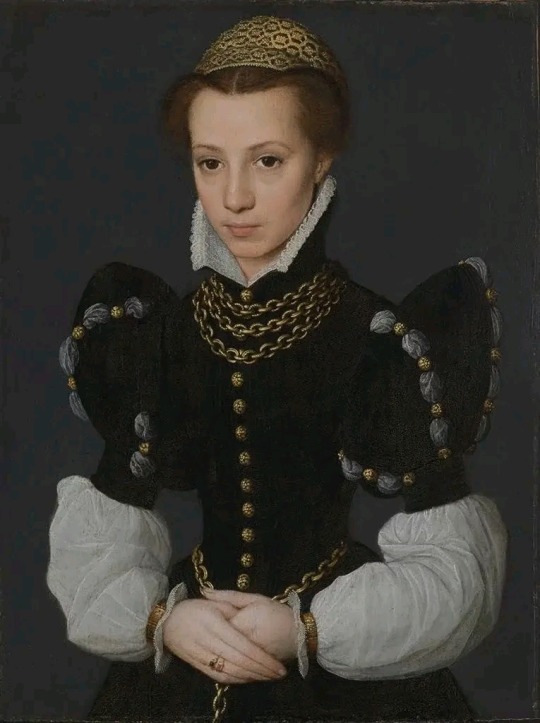
Catharina van Hemessen (attributed)
Portrait of a Young Lady, c. 1560
Baltimore Museum of Art
3 notes
·
View notes
Text

catharina van hemessen. portrait of a woman, 1540-1550.
2 notes
·
View notes
Text

Daily Painting
[Self-portrait Edition]
Catharina van Hemessen
SELF-PORTRAIT (1548)
0 notes
Text
Ladies please share to spread the word about two exhibits featuring women artists in two different cities

Artemisia Gentileschi, Self Portrait as Saint Catherine of Alexandria (ca. 1615–17). Collection of the National Gallery, London.
Renaissance art calls to mind some of the greatest names in art history—Da Vinci, Raphael, Michelangelo, and Donatello, just to name a few. Lesser known, however, are the influential women artists who shaped the era.
Referring to a period that bridged the end of the Middle Ages and early Modernism, the Renaissance was marked by a widespread effort to recover and advance the accomplishments of classical antiquity. Originating in Florence, Italy, but soon spreading throughout Europe, Renaissance art saw the advent of advanced linear perspective and an increase in realism. Many women artists—famous in their own time—were among these great visionaries.
Though for centuries, these women artists were largely overlooked in the annals of art history, contemporary scholarship has begun a long overdue reappraisal and rediscovery of their lives and works. Evidence of this resurgence of interest in the women artists of the Renaissance can be seen in the two current major museum shows in the U.S. that are dedicated to just that. “Strong Women in Renaissance Italy” at the Museum of Fine Arts, Boston brings together over 100 works from the 14th through early 17th century, exploring the lives and work of Italian women artists and is on view through January 7, 2024. At the Baltimore Museum of Art, “Making Her Mark: A History of Women Artists in Europe, 1400–1800” is a sweeping exhibition that aims to rectify critical oversight and bring awareness to historical women artists, and is also on view through January 7, 2024,.
In light of these two important exhibitions, we’ve brought together a brief introduction to five Renaissance women artists whom we think you should know.
Plautilla Nelli (1524–1588)

Plautilla Nelli, St. Catherine with Lily (ca. 1550). Collection of Le Gallerie Degli Uffizi, Florence.
Plautilla Nelli was a nun of the Dominican order at the convent of St. Catherine of Siena in Florence—and is considered by many scholars to be the first-known woman artist of Renaissance Italy. A self-taught painter, Nelli led a women’s artist workshop from the convent, and she was one of the few women mentioned in Vasari’s seminal treatise Lives of the Most Excellent Painters, Sculptors, and Architects. Because she developed her practice without formal training and was forbidden from studying male nudes, Nelli frequently copied works by other artists, as well as motifs from religious texts and sculpture.

Nelli’s work recently came into the limelight for her immense painting Last Supper, dating to 1568. Measuring over 21 feet long and 6 feet high, the painting remained in her convent’s refectory until the early 19th century, before being moved to another convent’s refectory and, ultimately, being placed in storage. Following an early 20th-century restoration and several more moves, it went on view to the public for the first time in over four centuries at the Santa Maria Novella Museum in 2019. Hanging alongside other masterworks by artists like Brunelleschi, it finally is getting the widespread recognition it deserves.
Catharina van Hemessen (1528–after 1565)
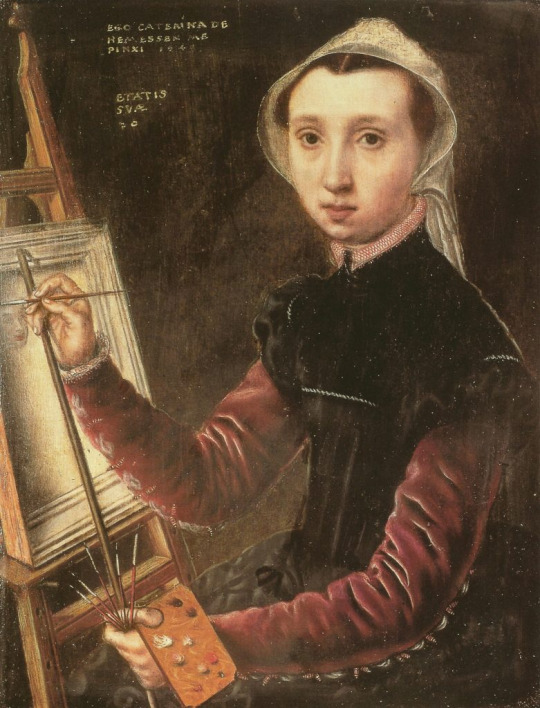
Catharina van Hemessen, Self-Portrait (1548). Collection of Kunstmuseum Basel.
Northern Renaissance painter Catharina van Hemessen was the daughter of prominent Mannerist painter Jan Sanders van Hemessen, and is the earliest Flemish woman painter with verified work that still exists today. Hailing from Antwerp, van Hemessen achieved success in her lifetime, including obtaining the patronage of Maria of Austria, regent of the Low Countries. She was included both in Vasari’s collection of artist biographies, as well as artist biographer Lodovico Guicciardini’s Description of the Low Countries (1567). Van Hemessen’s greatest claim to fame, however, is that she is attributed with completing the first known self-portrait of an artist at their easel—a compositional approach that has become a pillar of the art historical canon, as it has been taken up by artists ranging from Rembrandt van Rijn to Norman Rockwell.
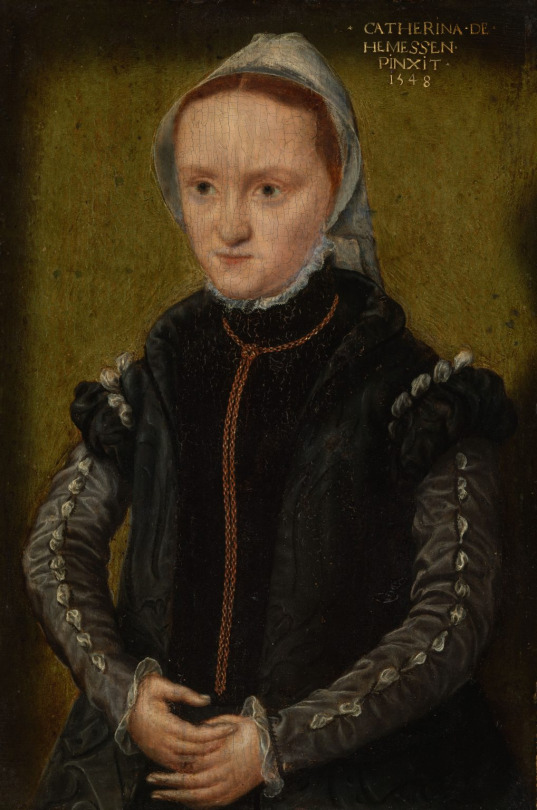
Though she created religious images, she was most well known as a portraitist. Eight portraits and two religious compositions signed by van Hemessen have survived, dating between 1548 and 1552. Notably, there are no verifiable works dating to later than 1554, which have led scholars to believe she ceased painting following her marriage to organist Christian de Morien that year—though there are records she continued to teach three male apprentices.
Sofonisba Anguissola (ca. 1532–1625)
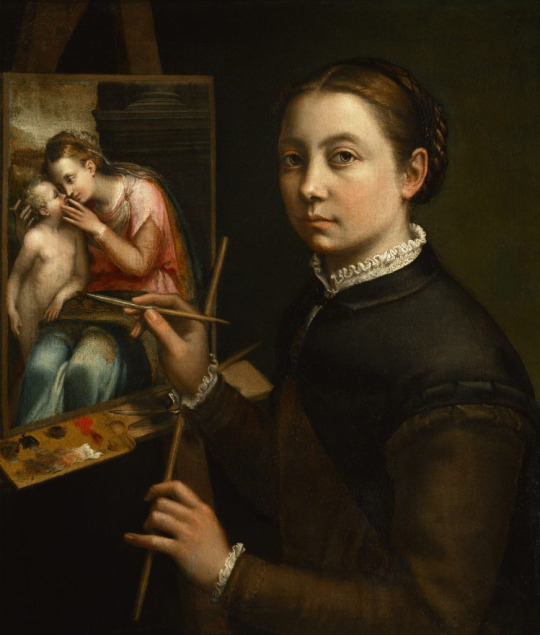
Sofonisba Anguissola, Self-portrait (ca. 1535–1625). Collection of Łańcut Castle Museum, Poland.
Sofonisba Anguissola was one of the most successful women artists of the Renaissance, with a reputation that rose to international acclaim in her lifetime. Born into a noble Milanese family, Anguissola was able to pursue her artistic aspirations with the support of her family, and began her formal training as a teenager; first apprenticing with Bernardino Campi for three years before working with Bernardino Gatti. Her position also allowed for her to become acquainted with Michelangelo, whom she exchanged drawings with. Her early career saw her complete numerous self-portraits as well as portraits of her sisters, including The Game of Chess (1555), which are noted for their realism and liveliness.

Sofonisba Anguissola, The Game of Chess (ca. 1555). Collection of the National Museum in Poznań, Poland.
Anguissola’s reputation as a painter quickly spread, and she was invited to join the court of King Philip II of Spain in Madrid in approximately 1559. Throughout her 14-year tenure there, she completed many official portraits of both members of the royal family and members of the court, adopting the formal and intricate style expected—though unfortunately, no work from this period survived due to a palace fire in the 18th century. Having garnered considerable royal favor, she ultimately spent the remainder of her life continuing to paint as well as teach and engage with young, up-and-coming artists. In 1624, one such young artist by the name of Anthony van Dyck visited Anguissola and recorded his visit in a series of sketches and noted that he learned more about the principles of painting from her than from anything else he had encountered.
Lavinia Fontana (1552–1614)

Lavinia Fontana, Self-portrait at the Spinet with Maid (1577). Collection of the Accademia Nazionale di San Luca, Rome.
Trained by her artist father Prospero Fontana, a teacher at the School of Bologna, Lavinia Fontana is considered the first professional woman artist insofar as she supported herself and her family solely on the income from her commissions. Unconventional for the time, her husband acted as her agent and took a primary role in childcare for their 11 children. She began her commercial practice in her mid-twenties, creating small devotional paintings, but later began and excelled at creating portraits—and became a favorite of Bolognese noblewomen who vied for her services. Unusual for the period, she also created large-scale mythological or religious paintings that occasionally featured female nudes.

Lavinia Fontana, The Visit of the Queen of Sheba to King Solomon (1599). Collection of the National Gallery of Ireland, Dublin.
In the early years of the 17th century, she was invited to Rome at the invitation of Pope Clement VIII and was soon appointed as an official portraitist at the Vatican, counting Pope Paul V as one of her sitters. Her career success continued to thrive, as evidenced by the numerous honors she received, and the bronze portrait medallion cast in her likeness by sculptor and architect Felice Antonio Casoni. She was also one of the first women elected to the Accademia di San Luca in Rome.
Artemisia Gentileschi (1593–1653)
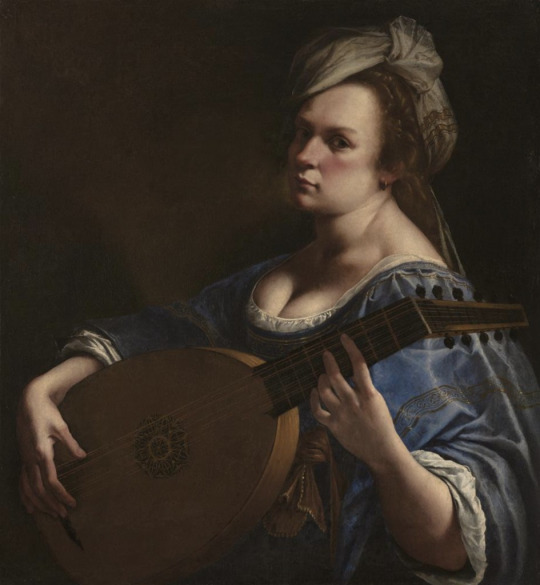
Artemisia Gentileschi, Self-portrait as a Lute Player (ca. 1615–1618). Collection of the Wadsworth Atheneum Museum of Art, Hartford.
Unlike many of her predecessors, Artemisia Gentileschi has maintained a level of renown over the centuries, with her dramatic and dynamic oeuvre that was unprecedented in her own time. Her Baroque compositions helped usher in a new era of painting. Today, her paintings draw the attention of global audiences. Born in Rome, her father was the painter Orazio Gentileschi, who trained Artemisia starting at an early age. Inspired greatly by the work of Caravaggio and his use of high-contrast compositions, her paintings garnered and maintained attention for their naturalism and nuance, as they broke from the idealism of generations past.

Artemisia Gentileschi, Judith and Her Maidservant with the Head of Holofernes (ca. 1623–1625). Collection of the Detroit Institute of Arts.
In 1612, Gentileschi relocated to Florence, which is where she first achieved major career success, including securing patronage from the House of Medici and being the first woman to attend the Accademia delle Arti del Disegno. From her oeuvre, Gentileschi has become most well-known for her self-portraits as well as religious scenes, specifically the story of Judith Beheading Holofernes—of which there are at least six known variations she completed. Gentileschi’s tendency to portray women as the protagonists of her works—and as equals to their male counterparts—made her innovative in her time and has subsequently secured her legacy as one of the most influential artists within Western art history—of either sex.
#Women in Art#Strong Women in Renaissance Italy#Museum of Fine Arts#Boston#There until January 7 2024#Making Her Mark: A History of Women Artists in Europe 1400 -1800#Baltimore Museum of Art#Plautilla Nelli (1524–1588)#Catharina van Hemessen (1528–after 1565)#Catharina van Hemessen created a whole genre in self portraits#Sofonisba Anguissola (ca. 1532–1625)#Lavinia Fontana (1552–1614)#Artemisia Gentileschi (1593–1653)
10 notes
·
View notes
Text
By Catharina van Hemessen -
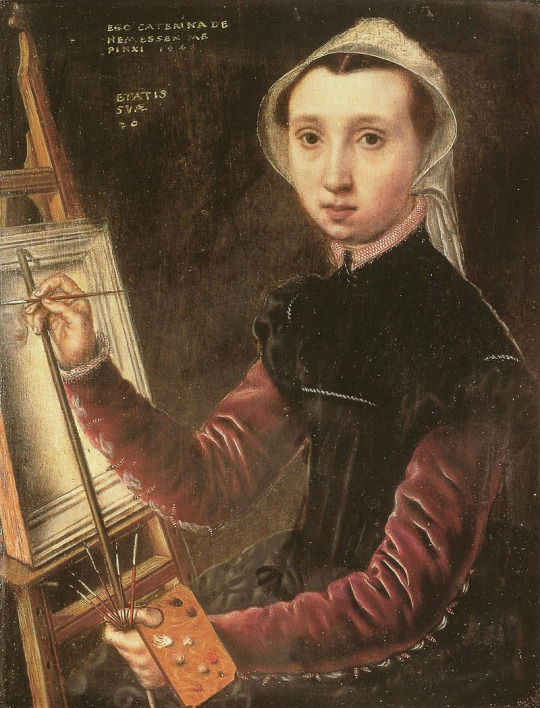
Öffentliche Kunstsammlung, Kunstmuseum, Basel. Dépôt de l'Institut Professeurs Bachofen et J.J. Burckhardt, 1921., Public Domain, https://commons.wikimedia.org/w/index.php?curid=1340243
#By Catharina van Hemessen -#¿Esta es la imagen y algunos datos (O no) la “Historia” la pones tú? ¡La tuya! ¿Lo harás...?
1 note
·
View note
Text
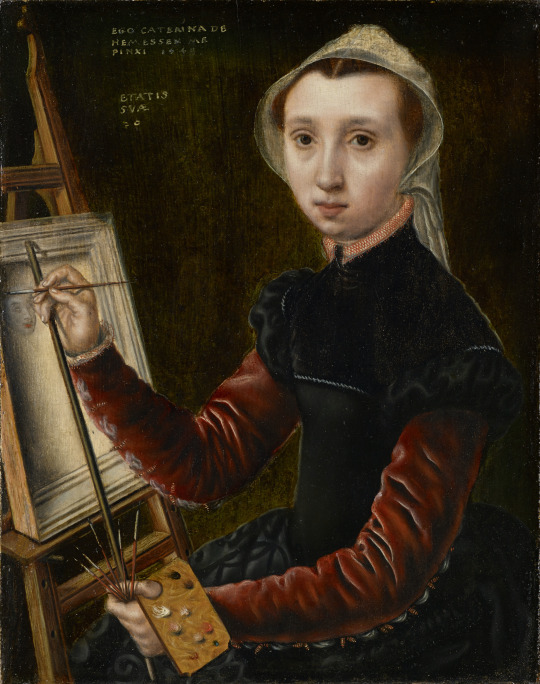
Source
Self-Portrait At The Easel
Catharina van Hemessen, 1548
#this is the oldest known self portrait by a female artist#dutch renaissance#flemish renaissance#oil on oak wood#art#art history#artblr#moi likes
3 notes
·
View notes
Note
Hey! If you’re struggling to find names for your Leo has a Twin AU, here’s some name suggestions from other renaissance artists if you wanna fit the theme of the others!
If Masculine: Caspar (van Wittel), Giovanni (Bellini), Nanni (di Banco), Piero (della Francesca), Andrea (del Castagno), Antonello (da Messina), Felippo(Lippi), Perugino, or Verrocchio
If Feminine: Elisabetta (Sirani), Judith (Leyster), Artemisia (Gentileschi), Clara (Peeters), Lavinia (Fontana), Sofonisba (Anguissola), Catharina (van Hemessen), Plautilla (Nelli), or Levina (Teerlinc)
omg thank u so much, this is so helpful!!!
giovanni is speaking to me but imma take some time to think abt it
#ryo asks#tmnt au#tmnt twins au#tmnt 2012#tmnt#teenage mutant ninja turtles#tmnt 2k12#teenage mutant ninja turtles 2012#tmnt leo#tmnt leonardo#tmnt leo 2012
13 notes
·
View notes
Text
Rottmnt oc time people
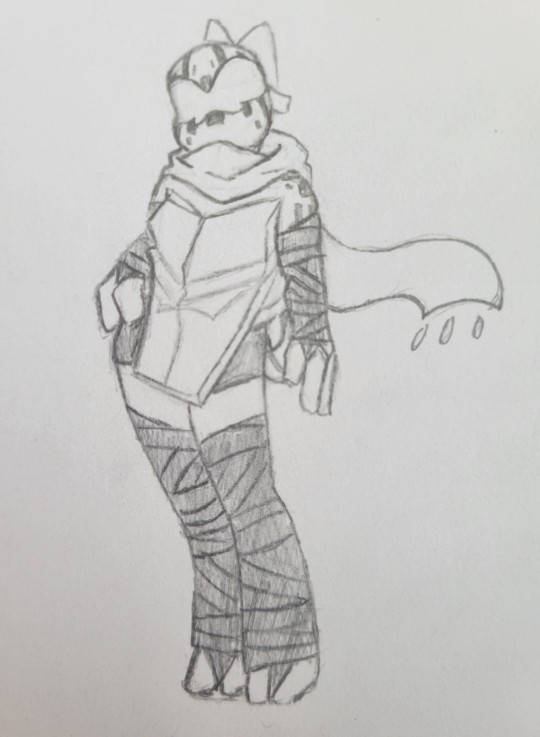

Everybody meet Hamato Catharina! (Named after Catherina van Hemessen)
She is the eldest sibling of the Hamato household at 16(a few months older then April) and is a South Asian box turtle.
#if anybody would like to know more about her lmk!#she has a very long nickname list that keeps growing and a human design in the works!#u think raph has a bad case of eldest daughter syndrom try being the ACTUAL eldest daughter#my art#rottmnt#rise of the tmnt#rottmnt oc#been really fighting with myself if i should or should not post her and ultimately said fuck it#SO HERE SHE IS
7 notes
·
View notes
Photo

Catharina van Hemessen (Flemish, 1528-c. 1587): Portrait of a Lady (c. 1551) (via Wikimedia Commons)
#Catharina van Hemessen#early women painters#early women artists#women artists#women painters#art#painting#sixteenth century#portrait#flemish painters
72 notes
·
View notes
Text
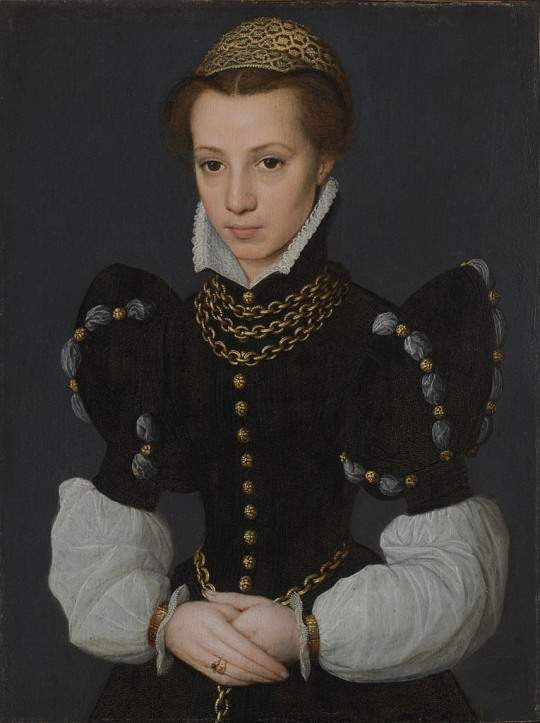
Portrait of a Lady, c.1560 attr. Catharina (Caterina) van Hemessen
0 notes
Text

Catharina van Hemessen, Portrait of a Lady (c. 1551)
Caterina or Catharina van Hemessen (1528 – after 1565) was a Flemish Renaissance painter. She is the earliest female Flemish painter for whom there is verifiable extant work.
She is mainly known for a series of small-scale female portraits completed between the late 1540s and early 1550s and a few religious compositions. via Wikipedia
photo via Wikimedia Commons
#CatharinavanHemessen #palianshow #womensart #artbywomen #artherstory #womensart1 #flemishart #painter #herstory #artherstory #femaleartist
0 notes
Text
Mädchen am Virginal

Catharina van Hemessen, Mädchen am Virginal, 1548. Wallraf-Richartz-Museum, Köln.
(Quelle)
"Trotz ihrer bescheidenen Maße waren viele dieser Instrumente durch kunstvolle Intarsien aus Materialien wie Edelhölzern, Elfenbein, Perlmutt, Vergoldungen oder Malereien wertvolle Luxusgegenstände, die beinahe an Schatzkästchen erinnern. Eines der wertvollsten Musikinstrumente überhaupt (reiner Materialwert) ist das berühmte Virginal von Annibale dei Rossi von 1577, mit Ebenholz, Elfenbein und 1928 Edel- und Halbedelsteinen – selbst auf den Tasten."
Jean Rondeau spielt Orlando Gibbons auf einem originalen Virginal aus dem 16. Jahrhundert (Pavana):
youtube
1 note
·
View note
Text
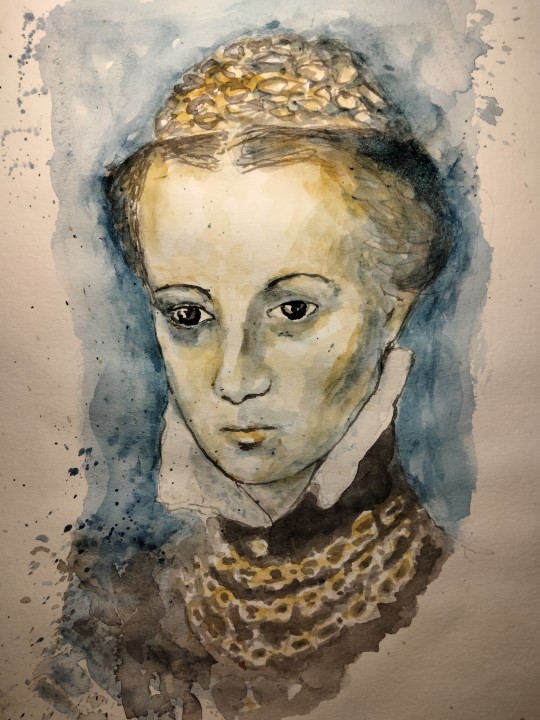
Thursday #PortraitChallenge #watercolour and #inkdrawing of Portrait of a young lady, painted by Catharina van Hemessen of Antwerp around 1560
Thank you https://twitter.com/artbma and https://twitter.com/StudioTeaBreak
#julesartvan http://www.artvan.co.uk/jules/young-lady
0 notes
